- News
- Reviews
- Bikes
- Accessories
- Accessories - misc
- Computer mounts
- Bags
- Bar ends
- Bike bags & cases
- Bottle cages
- Bottles
- Cameras
- Car racks
- Child seats
- Computers
- Glasses
- GPS units
- Helmets
- Lights - front
- Lights - rear
- Lights - sets
- Locks
- Mirrors
- Mudguards
- Racks
- Pumps & CO2 inflators
- Puncture kits
- Reflectives
- Smart watches
- Stands and racks
- Trailers
- Clothing
- Components
- Bar tape & grips
- Bottom brackets
- Brake & gear cables
- Brake & STI levers
- Brake pads & spares
- Brakes
- Cassettes & freewheels
- Chains
- Chainsets & chainrings
- Derailleurs - front
- Derailleurs - rear
- Forks
- Gear levers & shifters
- Groupsets
- Handlebars & extensions
- Headsets
- Hubs
- Inner tubes
- Pedals
- Quick releases & skewers
- Saddles
- Seatposts
- Stems
- Wheels
- Tyres
- Health, fitness and nutrition
- Tools and workshop
- Miscellaneous
- Buyers Guides
- Features
- Forum
- Recommends
- Podcast
 Should cyclists use daytime running lights Sept 2018
Should cyclists use daytime running lights Sept 2018Should cyclists use daytime running lights? Plus the best front and rear daytime cycling lights
You need front and rear lights for cycling in the dark, but do you also need to use lights in the daytime? We look at the argument for using lights during the daytime and round up a bunch of front and rear lights to consider if you do want to increase your visibility.
The best daytime running lights
- Lezyne Strip Drive Front — £29.49
- Magicshine Seemee 30 Combo — £24.99
- Giant Recon TL 200 rear light — £29.04
- Exposure Link Daybright — £55.96
- Blackburn DayBlazer 1100 — £55.99
- See.Sense Icon 2 rear light — £79.99
- Exposure Lights TraceR DayBright — £39.60
- Exposure Lights Sirius DayBright — £75
- Lezyne Strip Drive Pro 300 rear light — £52
- Lezyne Lite Drive 1000XL — £59.49
- Specialized Flux 900 Headlight — £69.99
- Bontrager Flare R City — £24
- Moon Comet-X front bike light — £15.75
It may not have escaped your attention that all new cars sold in the UK legally have to have daytime front lights. So should cyclists also be looking to boost their visibility when cycling in the daytime with front and rear lights? In a recent survey of 500 road.cc readers on Twitter, 52% said they do want daytime lights. It perhaps wasn't the result we were expecting.
Read more: The best front lights for cycling — beam comparison plus how-to-choose guide
To meet this demand, there are a growing number of bike brands marketing lights with daytime running modes, but what does this actually mean and are they any different to lights designed for nighttime cycling?
Exposure Lights has added a new Day Bright mode to its front and rear lights this winter. And it is more than just a flashing mode says Exposure’s Mark Swift. “The DayBright pulse pattern is the most noticeable to ensure it is recognised at distance on rural roads and also enable the light to cut through the noise of the urban town or city traffic and road distractions within daylight hours," he says.
“As the pulse pattern is not regular, once seen DayBright stays highlighted by the brain's receivers and ensures the cyclist is noticed,” adds Mark.
Why would a cyclist want to use lights during the daytime? Surely there’s no need when it’s light?
“Why not!” says Specialized’s William Watt. “Beyond smart responsible riding, visibility on the road is quite simply the most important investment a rider can make in their safety, particularly in a congested urban environment where every road user has a multitude of distractions. Daytime lights give the rider that extra layer of visibility on the road, particularly for that notorious black spot on the near side of traffic.”
It's not always bright and sunny during a typical UK winter day though. It’s often murky, drab and almost dark. Daytime lights can be used in these conditions says Exposure's Mark to help make cyclists stand out in changing light conditions and when “cycling in cities between building or country road in and out of tree cover where the sun cuts through the gaps but is then eclipsed by an obstacle the drivers eyes can sometimes not adjust fast enough. DayBright ensures the cyclist is spotted.”
It’s a stance that is backed up by See.Sense, a company that launched an intelligent daylight back in 2013 and every light since has had a daytime focus. “Daylight visibility has been really important to us right from the start,” the company tells road.cc. “When you consider that 80% of cycling accidents happen during the day, attracting attention to other road users as early as possible during these times is really quite crucial. Think about modern cars, they have their lights running almost any time you see them on the road. Why shouldn't it be the same, if not even more important for cyclists?”
That 80% figure that See.Sense refers to is based on evidence compiled by ROAP and you can read more facts and figures about the number of cyclists injured or killed in accidents here.
The argument for using daytime lights is starting to gather pace, but has anyone actually carried out a detailed survey to assess the impact of cyclists running daytime lights? Handily, just such a survey exists. It was conducted in Denmark in 2004/05 with 3,845 cyclists and concluded that those cyclists with permanent running lights recorded a 19% lower incident rate than a control group not using lights.
“The study shows that use of permanent bicycle running lights reduces the occurrence of multiparty accidents involving cyclists significantly,” the controlled experiment concluded. You can read that paper here.
So should we all start using daytime lights then? See.Sense recommends using flashing lights to help attract attention sooner. “When you have lights that flash brightly from both front and rear can help alert drivers sooner than a solid light, reducing risks out on the road,” the company tell us.
13 front and rear daytime lights
If you’re interested in daytime lights, here are a selection currently available in bike shops. There are loads more lights to consider in this buyers guide and don’t forget the beam comparison engine if you’re shopping for lights as well.
Lezyne Strip Drive Front — £29.49
The Lezyne Strip Drive 400 has been updated with a bright and really eye-catching day time flash, commendable battery life and faster charging. As with the old model, it's also fairly light, easy to operate, has loads of functions and is waterproof too. It's more of a be-seen rather than seeing light, though.
Read our review of the Lezyne Strip Drive Front
Magicshine Seemee 30 Combo — £24.99
The Magicshine Seemee 30 Combo is a set of 30 lumen LED lights aiming to get you seen. The slim profile means they easily attach to seat posts, seat stays, forks or handlebars, and features such as infrared ambient light sensors are rarely found at this price. They're easy to use, stuffed with useful features and very visible around town.
Read our review of the Magicshine Seemee 30 Combo
Giant Recon TL 200 rear light — £29.04
Giant's Recon TL 200 is an excellent rear light, offering lots of brightness, useful modes and decent run-times.
The Recon TL 200 is a bigger and brighter version of the TL 100. Which you choose comes down to personal preference, but for the extra tenner the 200 gets our vote for the extra brightness and run-time it offers.
Read our review of the Giant Recon TL 200
Exposure Link Daybright — £55.96
The Exposure Link Daybright is a secondary helmet light that adds 360-degree visibility and is great for being seen in heavy traffic. Designed and made in the UK, build quality is exceptional, it's very tough and run-times are reasonable bearing in mind its size and two LEDs.
Read our review of the Exposure Link Daybright
Blackburn DayBlazer 1100 — £55.99
The Blackburn Dayblazer 1100 front light is the biggest of the Dayblazer family. It's a beautifully made, five-function, compact torch type, capable of producing – surprise, surprise – 1100 lumens in its brightest setting, great for blasting along backroads, but with lower settings, pulsing and strobing for more built-up areas and for daylight running.
Read our review of the Blackburn DayBlazer 1100
See.Sense Icon 2 rear light — £79.99
The See.Sense was arguably the first smart light that used sensors to alter the brightness and speed of flash to suit different lighting conditions, as well as being able to detect car headlights. The light was so well received that it won the road.cc People’s Choice award in 2015 and they’ve since followed up with the 300 lumen Icon 2. You can read the review here.
Exposure Lights TraceR DayBright — £39.60
The TraceR is Exposure’s smallest and most affordable rear light with its new Day Bright mode. It has a 75-lumen rating with a three to 24 hour run time, weighs just 35g and has three brightness levels. Side visibility has been considered in the design of the light as well.
Exposure Lights Sirius DayBright — £75
If you want a bright and lightweight front light for commuting then the Sirius is a good option, with 575 lumens bright enough for most riding situations and a choice of seven modes, including the new DayBright. It’s easy to use and mount to the handlebars, with a tactile power button and battery gauge LED.
Lezyne Strip Drive Pro 300 rear light — £52
Lezyne has been producing lights with daytime visibility in mind for the past five years, intended to be brighter with unique flash patterns to be more visible to other road users up to 1 mile away. It offers 15 lights with a daytime flash mode, here are two contenders.
The Strip Drive 300 rear light, with its 300-lumen output, is one of the brightest lights on the market right now but there are 11 modes to choose from to suit all riding conditions. It packs a 100-lumen punch in the daytime mode, definitely ensuring you’ll boost your visibility.
Read our review of the Lezyne Strip Drive Pro 300
Lezyne Lite Drive 1000XL — £59.49
For front daytime lights, Lezyne offers the Lite Drive 1000XL. The small unit comprises two LEDs pumping out 1,000 lumens with a high-visibility daytime flash mode.
Read our review of the Lezyne Lite Drive 1000XL
Specialized Flux 900 Headlight — £69.99
Not to be left out, Specialized has developed the Flux 900 front light with two different LEDs with dedicated optics to provide the ideal beam pattern, and it also offers a daytime flash mode which reduces the lumen count to 300.
Bontrager Flare R City — £24
Bontrager was an early proponent of daytime lights and this Flare R City light is its smallest rear light. Despite its diminutive proportions, the light packs out 35 lumens from a single LED and offers up to five hours in the dedicated daytime flash mode.
Read our review of the Bontrager Flare R City
Bontrager has even had some of the Trek Factory Racer pros using daytime rear lights during the 2015 Tour de France prologue stage, but that marketing stunt aside we’ve not seen the lights in use since.
Moon Comet-X front bike light — £15.75
Moon offers two lights with a dedicated daytime flash mode, using a slow pulse that is designed to boost visibility as well as maximising battery runtime, with a claimed 23 hours in this mode. It’s small and light and at 120 lumens in the daytime mode plenty bright enough. There’s also a matching rear light
Read our review of the Moon Comet-X light
So daytime lights then, will you be investing or is the cynic in you thinking that the bike industry is just trying to sell more lights? Let us know in the comments section below.
Explore the complete archives of reviews of front lights and rear lights on road.cc
David worked on the road.cc tech team from 2012-2020. Previously he was editor of Bikemagic.com and before that staff writer at RCUK. He's a seasoned cyclist of all disciplines, from road to mountain biking, touring to cyclo-cross, he only wishes he had time to ride them all. He's mildly competitive, though he'll never admit it, and is a frequent road racer but is too lazy to do really well. He currently resides in the Cotswolds, and you can now find him over on his own YouTube channel David Arthur - Just Ride Bikes.
Latest Comments
- Rendel Harris 4 min 58 sec ago
Agreed, anyone holding a licence above Cat 5 shouldn't be allowed…
- quiff 5 min 41 sec ago
Agree that the humble Sheffield stand is preferable to all manner of odd alternatives. But I still dislike the potential for frame-on-stand contact...
- Coolkitty 13 min 19 sec ago
If your so concerned about the ecology why don t you buy cars that don t take up the whole road?
- quiff 14 min 11 sec ago
Sorry, confused - this is Ghengis, right?
- Shades 23 min 27 sec ago
Made me think of cycling in Berlin and Copenhagen; yes, they're flat and we all know the cycling infrastructure and attitudes to cycling are better...
- espressodan 30 min 46 sec ago
What an absolute bunch of wank.
- OldRidgeback 34 min 36 sec ago
Put a flashing light inside a light coloured one and I suppose it'd help visibility. But you'd still look a bit of a twonk wearing one, so no thanks.
- Matthew Acton-Varian 49 min 25 sec ago
I would imagine that the age of the rubber also makes a difference - used tyres are subject to air exposure, heat cycles and UV light during its...
- pmb1 58 min 16 sec ago
Were they robots in disguse?
- chrisonabike 1 hour 29 min ago
To borrow the joke from "The Vale of Laughter" by Peter de Vries: "Call me, Ishmael, but only in emergencies; for any other matters including...
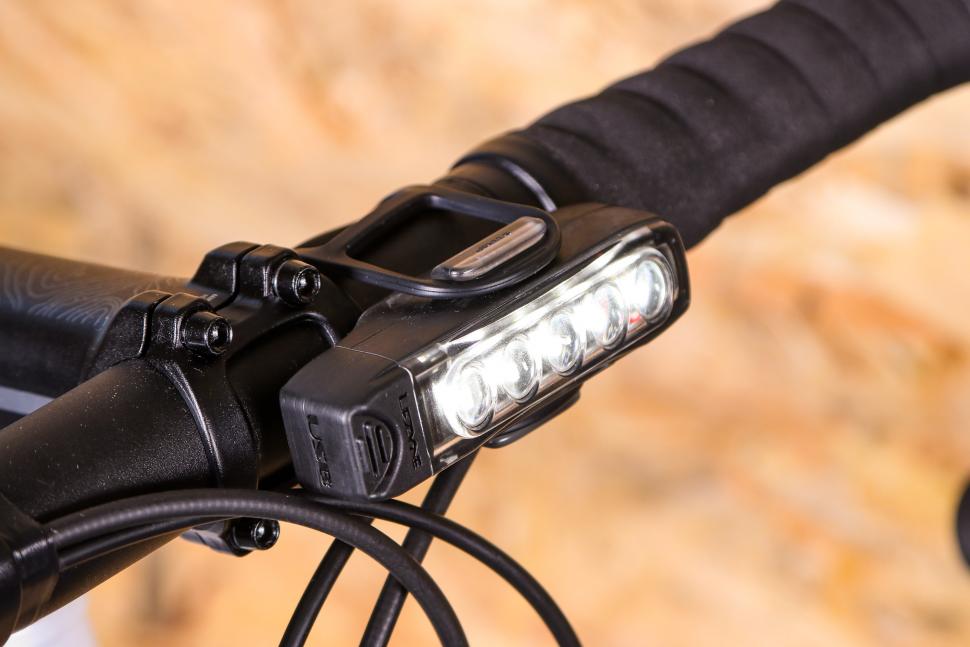



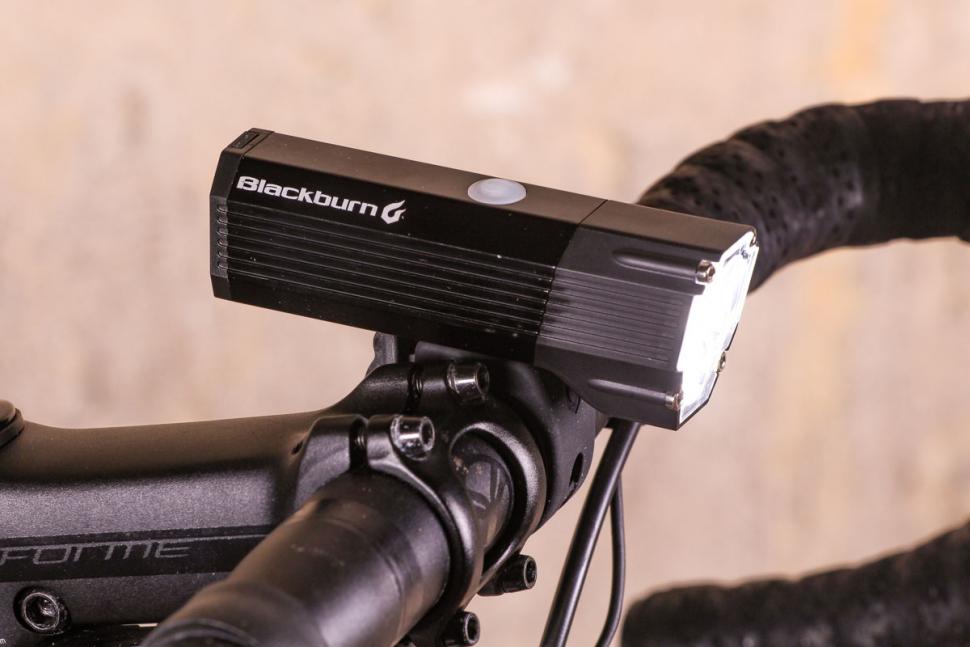
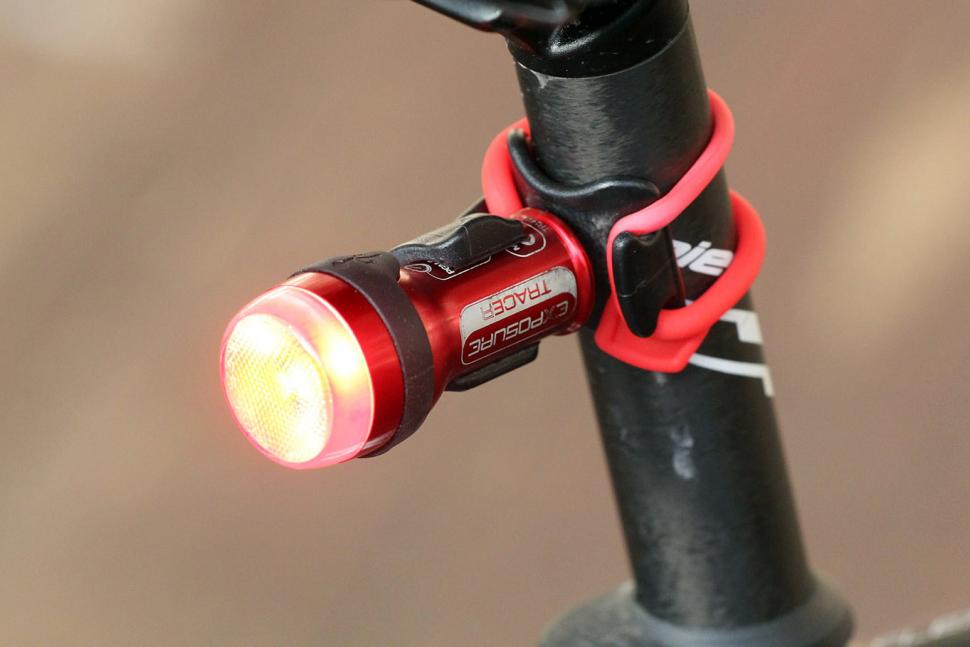

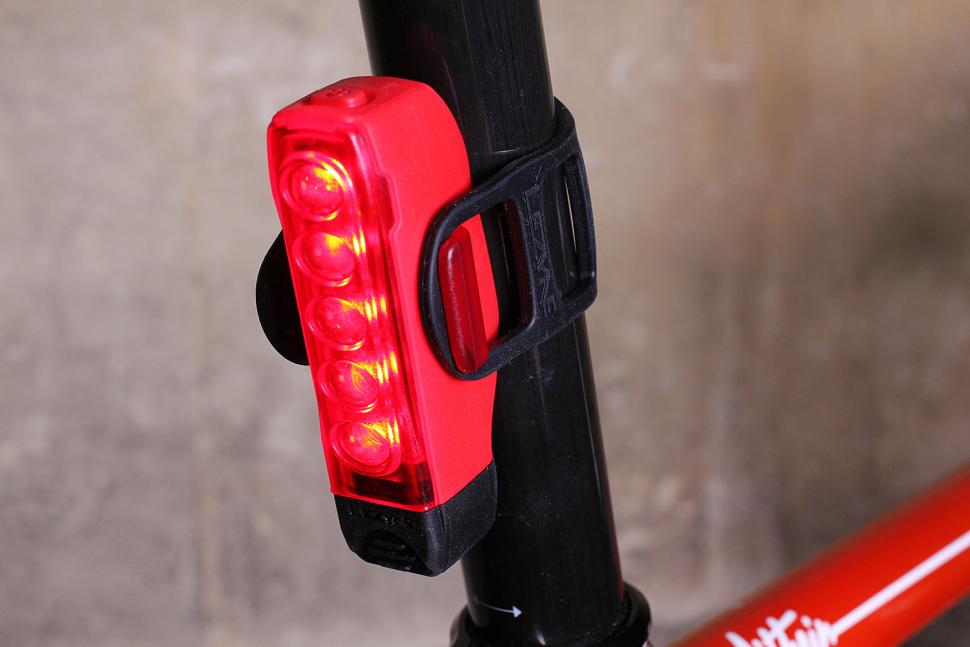
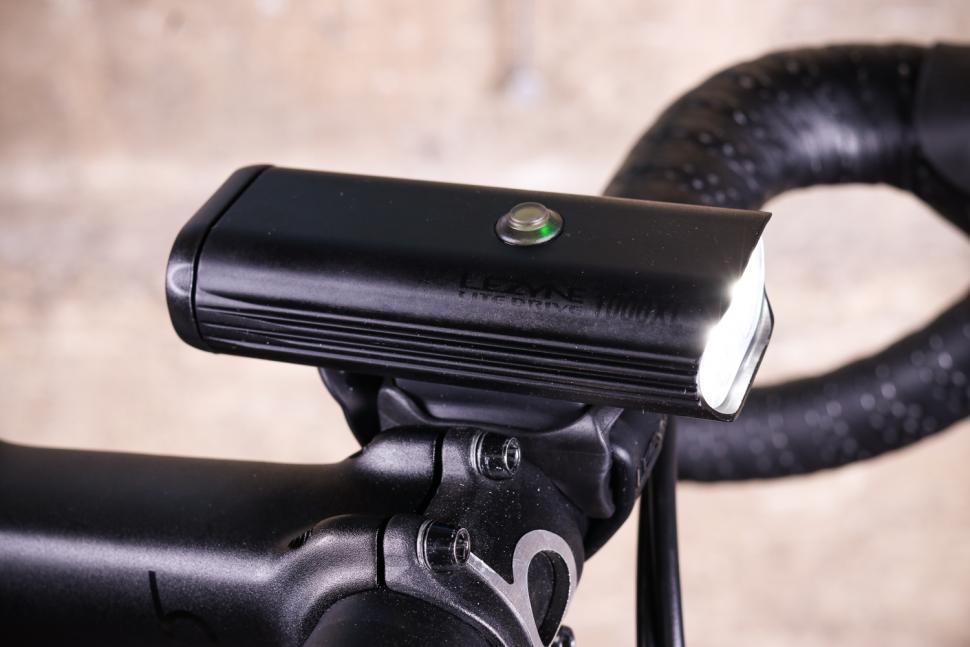
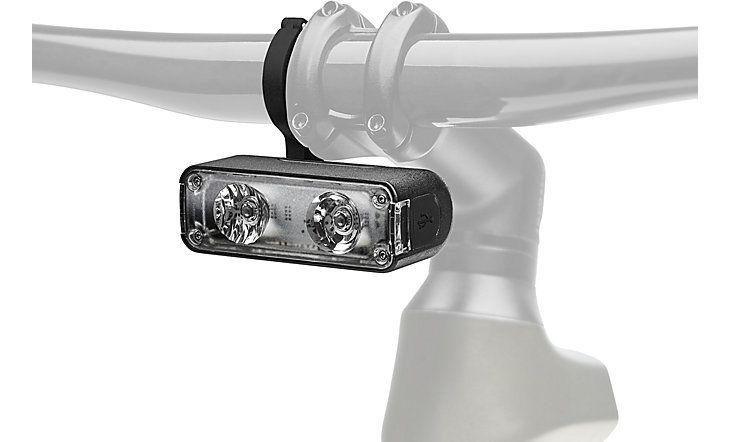
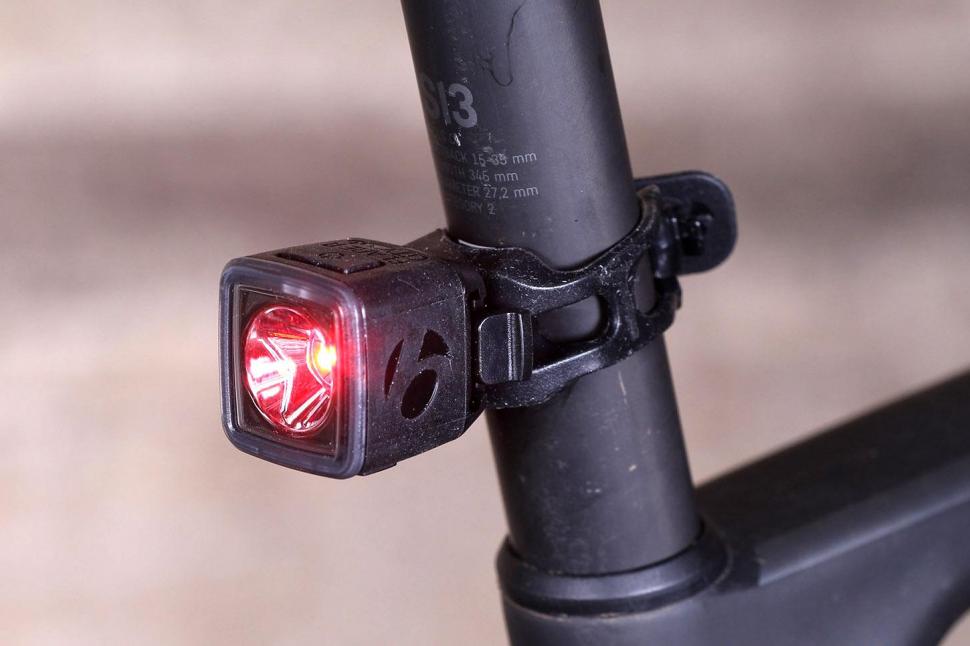
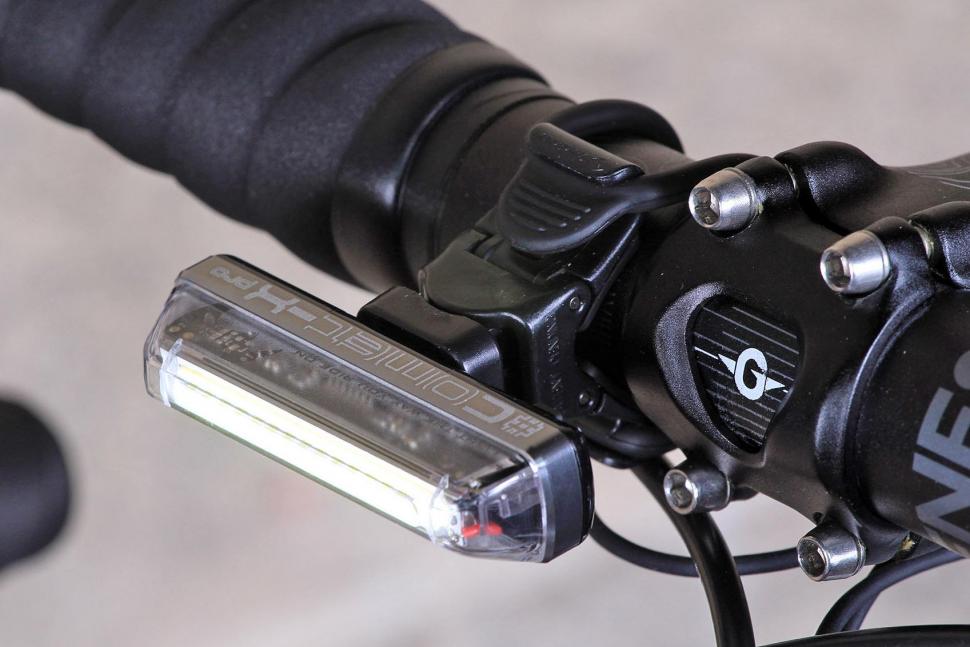
Add new comment
122 comments
No because I ride 100-300 or sometimes longer at a time. I don't want to carry 3kg worth of lights and batteries when I go out. This is more nonsense about putting the blame on people on their bikes than getting motorists to stop killing us.
No: because we don't want to train motorists just to look for lights rather than, you know, objects.
Fair point, but from what I've read, the human brain fills in blind spots and constructs images based on what it expects to see rather than the detail of what it is actually seeing, hence cyclists on busy roundabouts and junctions are missed because drivers are expecting to see other vehicles.
Flashing lights seem something which force the brain to process an image and react. Also, how about situations in strong sunlight when you cycle through a densely wooded section... a rear light will mean a rider can be seen when otherwise they might not.
Yes, its a failing of drivers that can be resolved by them looking properly but its not a perfect world.
All well and good, but why shift the onus onto the perfectly visible cyclist when surely the licensed motorist should only be driving according to the conditions and the limits of their vision?
Like I said, its not a perfect world, and I would argue a cyclist riding with no lights in dense woodland is not perfectly visible.
I would love for all drivers to be as vigilant and discplined as fighter pilots at all times, but that is never going to happen.
If you drive into dense woodland and can't see other traffic on the road, then maybe you should think about using your headlights, maybe?
I appreciate that drivers aren't as vigilant and disciplined as fighter pilots, but when the conditions change and you suddenly can't see anything, then either pay attention or pull over until you're not a danger to everyone.
Its not just Volvo's. Daylight running lights have been a legal requirement for brand new cars since Feb 2011 !
If you find them annoying its proof these lights have attracted your attention.
Where I live a lot of routes are under tree cover and simply a cyclist in dark clothing would be hidden in the shadows. Whilst Ive sometimes spotted another cyclist with a GOOD rear light, literally miles ahead.
If only some drivers could be trusted, because they cant it means I have to take extra precautions. In fact there's some busy main A-roads that I will never cycle along
I use the Exposure Trace and TraceR for daytime rides. They are excelent and bright enough on the medium setting, giving around 12 hours between charges
The study in cited in the article seem a bit suspect. I can't wait for the first claim of, "they didn't have a light on so I couldn't see them" as a defense in an accident scenario. Cyclists need to ride responsibly and predictably and motorists need to take the time and care to ensure the way is clear for them to proceed. If you can't see an object as large as a person on a bicycle in your path then you should not be driving. Even at night there are so few areas where it is too dark to see a cyclist or pedestrian. Perhaps it's different in the UK than in N. America, but here most urban settings are lit up like alien landing strips.
Actually the link is only to an abstract. A fairly cursory glance at which shows that although the authors draws an inference of a 19% reduction in accidents due to running lights the basis for doing so is rather deeply flawed. The number of accidents were quite low so drawing statistical inferences from it is dodgy in the first place, but the biggest flaw is that there was no attempt to establish or identify a causal link between daytime lights and the accident rate. To establish a causal link would require examination of the circumstances of each accident and for each case to establish whether lights or absence were a contributing factor. Whilst that might well be impractical without it the study really doesn't provide any evidence.
It is a real bugbear of mine that the word "evidence" is so widely misused when discussing cycling safety - especially on line.
I use then around town and in poor lighting conditions. I lso use them (perversely you might think) in bright sunshine - to highlight my presence when going under trees etc. where I might otherwise be hidden by the glare of the sun.
They SHOULD be driving according to conditions, and most do - but there's still a number of idiots out there.
I've got the lights already. There's no cost for me to put them on in the daytime. I don't see a downside.
For awhile I did ride in the daytime with both front and rear lights, but I soon gave up on the front because people just drove as they did with the light on, and I was doing a better job of noticing them then them noticing me; but I always ride with my tail light strobing since the doctors removed my third eye that was in the back of my head...
I've been using lights at sunset, when sun's angle is low & can be blinding. Helps me to feel safe.
I tend to use my lights according to the conditions of the day. Riding into school at 7am under grey September skies, I put my front and rear lights into flashing mode, riding in at 7am on a July day under blazing sunshine I don't. Likewise, a couple of my longer, more scenic routes home have wooded sections, and I generally stop before those and put my lights on regardless of overhead conditions.
The problem I have with encouraging constant use of daytime running lights is it just gives drivers another excuse in an incident ... sorry, officer, I didn't see the cyclist I hit at lunchtime yesterday because he didn't have his lights on. Anything that makes it easier for the police and courts to blame the victim is a bad thing in my book.
Yes, I want to be as visible as I possibly can, but I have also been driving for over 30 years without ever hitting a cyclist so I am not convince that daytime lights under all circumstances is the way to go.
if you are going to use a daytime light make sure it is a front one (I do).
as this document says:
https://www.rospa.com/rospaweb/docs/advice-services/road-safety/cyclists/cycling-accidents-factsheet.pdf
“Almost two thirds of cyclists killed or seriously injured were involved in collisions at, or near, a road junction, with T-junctions being the most commonly involved”
No
Does anyone have a solution to fitting a rear light to a non-standard seatpost? I have TraceR rear lights but the bracket is designed for a round seatpost whereas my new bike has a post with a square back - the causes the light to work its way round until it's pointing sideways.
Advice/suggestions appreciated!
Sugru
"So should we all start using daytime lights then?"
Short answer - "Sorry, but fuck off."
A wee bit longer an answer. So the most aggressively designed vehicles, appealing to the most aggressive drivers, increasingly have "get-the-f**k-out-of-my-fat-arsed-way" permanent lights ... and cyclists should go down that route? FFS.
Curb the aggression of Audi/BMW/Volvo drivers.
I've always found the issue with lights to be a little too narrowly focused (sorry) . My issue is with cyclists without any lights or such pathetic lights that are useless anyway..AND...people with poorly positioned lights or lights that are over bright even at night. Commuting in London by bike it is quite easy to be blinded by cycle lights pointing up into your eyes and with a brightness suitable for the darkest countryside. This for me is as much a problem as not having lights. Context and appropriateness seems to get lost in the race to have the 'brightest is best' .
I'm guessing you don't drive.
Personally..... I tend to use lights at night or in poor lighting..... not day running lights...
Like hi viz and helmets, rear lights especially seem to give the green light to drivers that you are safe and so therefore they can take risks when passing you.
We as a group met for a ride last weekend and while pre ride faffing a guy on a black bike, with black castelli with no lights went past us, we passed pleasantries and we saw him easily as his silhouette showed up well against the light sky. If we could see him then why can't drivers?
I'm not saying don't use flashing lights during the day either, we used them last Saturday as it was low light and raining, if only cars were lit up ...
As for best lights.....it's like asking.... best tyres, chain lube, helmets, cycle kit... Take Care Out There #Respect
Personally..... I tend to use lights at night or in poor lighting..... not day running lights...
Like hi viz and helmets, rear lights especially seem to give the green light to drivers that you are safe and so therefore they can take risks when passing you.
We as a group met for a ride last weekend and while pre ride faffing a guy on a black bike, with black castelli with no lights went past us, we passed pleasantries and we saw him easily as his silhouette showed up well against the light sky. If we could see him then why can't drivers?
I'm not saying don't use flashing lights during the day either, we used them last Saturday as it was low light and raining, if only cars were lit up ...
As for best lights.....it's like asking.... best tyres, chain lube, helmets, cycle kit... Take Care Out There #Respect
Personally..... I tend to use lights at night or in poor lighting..... not day running lights...
Like hi viz and helmets, rear lights especially seem to give the green light to drivers that you are safe and so therefore they can take risks when passing you.
We as a group met for a ride last weekend and while pre ride faffing a guy on a black bike, with black castelli with no lights went past us, we passed pleasantries and we saw him easily as his silhouette showed up well against the light sky. If we could see him then why can't drivers?
I'm not saying don't use flashing lights during the day either, we used them last Saturday as it was low light and raining, if only cars were lit up ...
As for best lights.....it's like asking.... best tyres, chain lube, helmets, cycle kit... Take Care Out There #Respect
Exposure make a saddle rail bracket
https://exposurelights.com/products/bike/saddle-rail-bracket
and also many other brackets for weird mounts
https://exposurelights.com/products/bike/brackets-and-mounts
This article is over two years old and still gets dredged up every year at this time.
I think this bolg says everything you need to know about the subject: https://waronthemotorist.wordpress.com/tag/bollards/
Thanks for the link, made me chuckle.
If only all those fluroescent yellow, reflective, illuminated bollards had been equipped with daytime running lights....
*no, I'm not being serious!*
I've an aero seatpost and the SeeSense lights come with a sleeve thing that will work on that. I'd think it would work for you too ?
Pages